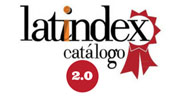Teletrabajo como una medida de transporte sostenible en Ecuador
DOI:
https://doi.org/10.29019/enfoqueute.786Palabras clave:
teletrabajo, consumo de energía, emisiones GEI, política, transporte sostenibleResumen
El propósito de este artículo es proporcionar información para determinar que el teletrabajo en Ecuador puede utilizarse como una medida de transporte sostenible. Brevemente, se describe el desarrollo sostenible y se cubren determinadas definiciones y enfoques relacionados con el transporte sostenible, como el enfoque Evitar-Cambiar-Mejorar (ASI), así como también la Gestión de la Demanda del Transporte (TDM), las mismas que sirven para validar desde un punto de vista conceptual la aplicación y utilidad de teletrabajo. Se analiza la situación actual del sector transporte en Ecuador; la demanda energética final; los aspectos ambientales relacionados con el transporte y la cantidad de empleados públicos y privados que realizan teletrabajo. Teniendo en cuenta algunas hipótesis como la tasa de propiedad de automóviles, la cantidad total de kilómetros recorridos por año y la suposición de la distancia recorrida por los empleados que toman el transporte público; estas suposiciones ayudaron a determinar los ahorros que pueden obtenerse a través del teletrabajo en la actualidad. Por lo tanto, estos resultados proporcionarían información adecuada para que quienes tomen las decisiones realicen un pronunciamiento concluyente sobre si apoyar o no el teletrabajo como un enfoque válido para laborar y desarrollar las políticas necesarias para mantenerlo en el tiempo.
Descargas
Referencias
Agencia de Regulación y Control de Energía y Recursos Naturales No Renovables. (2021). Agencia de Regulación y Control de Energía y Recursos Naturales No Renovables - ARC. Precios combustibles. https://controlrecursosyenergia.gob.ec/precios-combustibles/
Bongardt, D., et al. (2019). Sustainable Urban Transport: Avoid-Shift-Improve (A-S-I). Deutsche Gesellschaft für Internationale Zusammenarbeit (GIZ) GmbH.
https://www.transformative-mobility.org/assets/publications/ASI_TUMI_SUTP_iNUA_No-9_April-2019.pdf
Broaddus, A., Litman, T. A., & Menon, G. (2009). Transportation Demand Management: Training Document. In Transportation in the New Millenium, 0 (0): 1-118. http://gulliver.trb.org/publications/millennium/00123.pdf
Budnitz, H. (2019). Sustainable Mobility. In Leal Filho, editors, Encyclopedia of Sustainability in Higher Education (pp. 1833-1842). Springer International Publishing. https://doi.org/10.1007/978-3-030-11352-0_67
Büttner, L., & Breitkreuz, A. (2021). Un año de teletrabajo. Su impacto en la movilidad y en las emisiones de CO2. https://es.greenpeace.org/es/wp-content/uploads/sites/3/2021/03/informe-teletrabajo-GP-2.pdf
Cambio Climático Murcia. (n.d.). Cambio Climático Murcia. E-CO2 Calculadora. Retrieved July 7, 2021, from http://cambioclimaticomurcia.carm.es/calculadora/index.htm#
Cerqueira, E. D. V., et al. (2020). Does working from home reduce CO2 emissions? An analysis of travel patterns as dictated by workplaces. Transportation Research Part D: Transport and Environment, 83: 102338. https://doi.org/10.1016/j.trd.2020.102338
Corbi, M. (2014). Blog Lenovo. Teletrabajo: pasado, presente y futuro. https://www.bloglenovo.es/teletrabajo-pasado-presente-y-futuro/
Dima, A. M., et al. (2019). Sustainable social and individual implications of telework: A new insight into the Romanian labor market. Sustainability, 11(13). https://doi.org/10.3390/su11133506
EPA. (2021). Environemntal Protection Agency. Calculadora de equivalencias de gases de efecto invernadero. Cálculos y referencias. https://espanol.epa.gov/la-energia-y-el-medioambiente/calculadora-de-equivalencias-de-gases-de-efecto-invernadero-calculos-y
Giovanis, E. (2018). The relationship between teleworking, traffic and air pollution. Atmospheric Pollution Research, 9(1): 1-14. https://doi.org/10.1016/j.apr.2017.06.004
Godínez-Zamora, G., et al. (2020). Decarbonising the transport and energy sectors: Technical feasibility and socioeconomic impacts in Costa Rica. Energy Strategy Reviews, 32:1-12. https://doi.org/10.1016/j.esr.2020.100573
Hickman, R., & Banister, D. (2019). Transport and the environment. In A Research Agenda for Transport Policy. Edward Elgar Publishing. p. 25-33. https://doi.org/https://doi.org/10.4337/9781788970204.0001
IEA. (n.d.). International Energy Agency. Working from Home Can Save Energy and Reduce Emissions. But How Much? Retrieved July 6, 2021, from https://www.iea.org/commentaries/working-from-home-can-save-energy-and-reduce-emissions-but-how-much
INEC. (2019). Ecuador cuenta con su reloj poblacional. https://www.ecuadorencifras.gob.ec/ecuador-cuenta-con-su-reloj-poblacional/
INEC. (2020). Anuario de estadíticas de transporte 2019. https://www.ecuadorencifras.gob.ec/documentos/web-inec/Estadisticas_Economicas/Estadistica de Transporte/2019/2019_ANET_PPT.pdf
INEC. (2021). Anuario de estadística de transporte. https://www.ecuadorencifras.gob.ec/anuarios-de-transporte-2/
INEC. (2012). Encuesta nacional de ingresos y gastos de los hogares urbanos y rurales 2011-2012. Resumen metodológico y principales resultados. https://www.ecuadorencifras.gob.ec/documentos/web-inec/Estadisticas_Sociales/Encuesta_Nac_Ingresos_Gastos_Hogares_Urb_Rur_ENIGHU/ENIGHU-2011-2012/Metologia_ENIGHUR_2011-2012_rev.pdf
Insituto de Investigación Geológico y Energético - IIGE. (2019). Balance energético nacional 2019. https://www.recursosyenergia.gob.ec/wp-content/uploads/2020/12/Balance-Energetico-Nacional-2019-1.pdf
Kreuzer, F. M., & Wilmsmeier, G. (2014). Eficiencia energética y movilidad en América Latina y el Caribe, Una hoja de ruta para la sostenibilidad.
Lattes, A. E. (2001). Población urbana y urbanización en América Latina. In Fernando Carrión, editor, La ciudad construida urbanismo en América Latina. FLACSO. p. 49-77.
León De La Barba, A. M. (2020). América Economía. Primer Ranking Latinoamericano de Sustentabilidad una medición necesaria. https://www.americaeconomia.com/negocios-industrias/primer-ranking-latinoamericano-de-sustentabilidad
Ministerio del Trabajo del Ecuador. (2020). Boletín Estadístico anual - El mercado laboral del Ecuador 2020. https://www.trabajo.gob.ec/wp-content/uploads/2021/04/BoletinAnual_V7.pdf
Mobility Lab. (n.d.). Mobility Lab. Retrieved June 30, 2021, from https://mobilitylab.org/about-us/what-is-tdm/
Morales López, D. A., & Pérez Sisa, F. G. (2020). Teletrabajo como estrategia de competitividad y desarrollo para las empresas en el Ecuador. Revista Eruditus, 1(2): 53-70. https://doi.org/10.35290/re.v1n2.2020.318
Mouratidis, K., Peters, S., & Van Wee, B. (2021). Transportation technologies, sharing economy, and teleactivities: Implications for built environment and travel. Transportation Research Part D: Transport and Environment, 92: 102716. https://doi.org/10.1016/j.trd.2021.102716
Navarrete Rojas, J. (2014). El teletrabajo, ventajas e inconvenientes. Icade. Revista de La Facultad de Derecho, 93: 27. https://revistas.comillas.edu/index.php/revistaicade/article/download/4711/4526/
O’Brien, W., & Yazdani Aliabadi, F. (2020). Does telecommuting save energy? A critical review of quantitative studies and their research methods. Energy and Buildings, 225: 110298. https://doi.org/10.1016/j.enbuild.2020.110298
Prices, G. P. (2021). Global Petrol Prices. Gasoline Prices, Liter, 12-Jul-2021. https://www.globalpetrolprices.com/gasoline_prices/
Rivas, M. E., Suárez-Alemán, A., & Serebrisky, T. (2019). Hechos estilizados de transporte urbano en América Latina y el Caribe. In Nota Técnica No. IDB-TN-1640. https://publications.iadb.org/publications/spanish/document/Hechos_estilizados_de_transporte_urbano_en_América_Latina_y_el_Caribe_es_es.pdf
SENDECO2. (2021). SENDECO2. Precios CO2. https://www.sendeco2.com/es/precios-co2
Transformative Urban Mobility Initiative TUMI. (2019). Avoid Shift Improve - Instruments. https://www.transformative-mobility.org/publications/avoid-shift-improve-instruments
United Nations. (n.d.). Sustainable Develeopment Goals. Sustainable Develeopment Goals. Retrieved April 13, 2021, from https://www.un.org/sustainabledevelopment/news/communications-material/
United Nations-General Assembly. (1987). Report of the World Commission on Environment and Development : “Our common future” Our common future [Brundtland report]. https://digitallibrary.un.org/record/139811?ln=es#record-files-collapse-header
Venturini, G., Karlsson, K., & Münster, M. (2019). Impact and effectiveness of transport policy measures for a renewable-based energy system. Energy Policy, 133: 110900. https://doi.org/10.1016/j.enpol.2019.110900
Yale. (2020). Environmental Performance Index. 2020 EPI Results. https://epi.yale.edu/epi-results/2020/component/epi
Zhang, R., & Zhang, J. (2021). Long-term pathways to deep decarbonization of the transport sector in the post-COVID world. Transport Policy, 110: 28-36. https://doi.org/10.1016/j.tranpol.2021.05.018
Descargas
Publicado
Número
Sección
Licencia
Derechos de autor 2022 Los Autores

Esta obra está bajo una licencia Creative Commons Reconocimiento 3.0 Unported.
Los autores retienen todos sus derechos (© copyright).
- Los autores retienen sus derechos de marca y patente, y también sobre cualquier proceso o procedimiento descrito en el artículo.
- Los autores retienen el derecho de compartir, copiar, distribuir, ejecutar y comunicar públicamente el artículo publicado en Enfoque UTE (por ejemplo, colocarlo en un repositorio institucional o publicarlo en un libro), siempre que se dé el reconocimiento de su publicación inicial en la revista Enfoque UTE.
- Los autores retienen el derecho a hacer una posterior publicación de su trabajo, de utilizar el artículo o cualquier parte de aquel (por ejemplo: una compilación de sus trabajos, notas para conferencias, tesis, o para un libro), siempre que indiquen la fuente de publicación (autores del trabajo, revista, volumen, número y fecha).
























